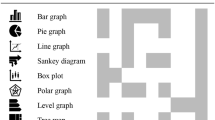Abstract
A tunnel data schema employing the New Austrian Tunneling Method (NATM) is proposed to efficiently manage and exchange the design information of road tunnels between different computer environments. The data schema was developed by extending the Industry Foundation Classes (IFC) used as standards in Building Information Modeling/Model (BIM) projects. The design guidelines and tunnel drawings were analyzed in order to apply the design information of the NATM road tunnels. From the analysis results, the applicable IFC elements were identified through a comparative analysis with the existing IFC data schema, and new items were defined for the additional necessary elements. The newly defined elements were classified into the parts representing the information of the space occupied by the tunnel and that representing the information on components such as shotcrete, steel ribs, and concrete linings. The applicability of the developed schema was examined by using it to construct an experimental environment, in which information modeling was possible.
Similar content being viewed by others
References
Arthaud, G. and Lebegue, E. (2007). IFC-Bridge V2 Data Model Edition R7. in Section IFC-Bridge V2 Data Model Edition R7, IAI French Chapter.
Bickel, J. O. and Kuesel, T. R. (1982). Tunnel engineering handbook, Van Nostrand Reinhold.
Björk, B.-C. (1989). “Basic structure of a proposed building product model.” Computer-Aided Design, Vol. 21, No. 2, pp. 71–78, DOI: 10.1016/0010-4485(89)90141-3.
buildingSMART (2014a). buildingSMART Infrastructure Room [Online], Available: http://www.buildingsmart-tech.org/[Accessed April 29, 2014].
buildingSMART (2014b). buildingSMART Newsletter, No. 15.
buildingSMART International MSG (2014). Industry Foundation Classes Release 4 [Online], Available: http://www.buildingsmart-tech.org/[Accessed April 29, 2014].
Cambridge Systematics Inc., Bentley Systems Inc., Info Tech Inc., Michael Baker Jr. Inc. and Campbell, C. E. (2006). XML Schemas for Exchange of Transportation Data -Final Report: Transportation Research Board of the National Academies.
Crews, N., Hall, E., and Rebolj, D. (2002). LandXML Schema Version 1.0 Reference. in Section LandXML Schema Version 1.0 Reference, LandXML.org.
Crowley, A. J. and Watson, A. S. (2000). CIMsteel Integration Standards Release 2: Overview. in Section CIMsteel Integration Standards Release 2: Overview, Steel Construction Institute.
Gielingh, W. (1988). “General AEC Reference Model (GARM): An aid for the integration of application specific product definition models.” in: CIB Seminar Conceptual Modeling of Buildings, Lund, Sweden, pp. 165–178.
Gröger, G., Kolbe, T. H., Nagel, C., and Häfele, K.-H. (2012). OGC City Geography Markup Language (CityGML) Encoding Standard V2.0. in Section OGC City Geography Markup Language (CityGML) Encoding Standard V2.0, Open Geospatial Consortium.
Halfawy, M. R., Hadipriono, F. C., Duane, J., and Larew, R. (2005). “Development of model-based systems for integrated design of highway Bridges.” in: International Conference on Civil, Structural and Environmental Engineering Computing, Rome, Italy, pp. 1–15.
INSPIRE Thematic WG Transport Networks (2010). INSPIRE Data Specification on Transport Networks —Guidelines V3.1. in Section INSPIRE Data Specification on Transport Networks —Guidelines V3.1, Infrastructure for Spatial Information in Europe (INSPIRE).
ISO-TC184/SC4 (2002). ISO 10303-21:2002 Industrial automation systems and integration —Product data representation and exchange —Part 21: Implementation methods: Clear text encoding of the exchange structure. in Section ISO 10303-21:2002 Industrial automation systems and integration —Product data representation and exchange —Part 21: Implementation methods: Clear text encoding of the exchange structure.
ISO-TC184/SC4 (2013). ISO 16739:2013 Industry Foundation Classes (IFC) for data sharing in the construction and facility management industries. in Section ISO 16739:2013 Industry Foundation Classes (IFC) for data sharing in the construction and facility management industries.
Jang, S. and Lee, Y. B. (2009). “The trend of high speed tunneling methods and TBM.” Mechanics and Materials, Vol. 21, No. 4, pp. 96–105 (in Korean).
Korea Highway Corporation (2009). Road Design Guide (Tunnel). in Section Road Design Guide (Tunnel) (in Korean).
Korean Tunnelling Association (2007). Tunnel Design Criteria. in Section Tunnel Design Criteria (in Korean).
Korean Tunnelling Association (2011). Tunnel, Theory and Practice. (in Korean).
Lee, S.-H. and Jeong, Y.-S. (2006). “A system integration framework through development of ISO 10303-based product model for steel bridge.” Automation in Construction, Vol. 15, No. 2, pp. 212–228, DOI: 10.1016/j.autcon.2005.05.004.
Lee, S.-H. and Kim, B.-G. (2011). “IFC Extension for road structures and digital modeling.” Procedia Engineering, Vol. 14, pp. 1037–1042, DOI: 10.1016/j.proeng.2011.07.130.
Liebich, T. (2009). IFC 2x Edition 3 Model Implementation Guide Version 2.0. in Section IFC 2x Edition 3 Model Implementation Guide Version 2.0, buildingSMART International Modeling Support Group.
McAuley, C., Clark, S., and Krammer, B. (2000). Programming AutoCAD in ObjectARX: Autodesk Press, San Rafael.
STEP Tools Software (2010). ST-Developer Tools Reference Manual: STEP Tools, Inc.
Yabuki, N. (2008). “Representation of caves in a shield tunnel product model.” in: The 7th European Conference on Product and Process Modeling, Sophia Antipolis, France, pp. 545–550.
Yabuki, N. and Li, Z. (2006). “Development of new IFC-BRIDGE data model and a concrete bridge design system using multi-agents.” in: CORCHADO, E., YIN, H., BOTTI, V. & FYFE, C. (eds.) Intelligent Data Engineering and Automated Learning -Ideal 2006, Proceedings, Place Published, Springer-Verlag Berlin, pp. 1259–1266.
Yabuki, N. and Shitani, T. (2003). “An IFC-based product model for RC or PC slab bridges.” in: The 20th CIB W78 Conference on Information Technology in Construction, Auckland, New Zealand, pp. 463–470.
Author information
Authors and Affiliations
Corresponding author
Electronic supplementary material
Rights and permissions
About this article
Cite this article
Lee, SH., Park, S.I. & Park, J. Development of an IFC-based data schema for the design information representation of the NATM tunnel. KSCE J Civ Eng 20, 2112–2123 (2016). https://doi.org/10.1007/s12205-015-0123-8
Received:
Revised:
Accepted:
Published:
Issue Date:
DOI: https://doi.org/10.1007/s12205-015-0123-8




